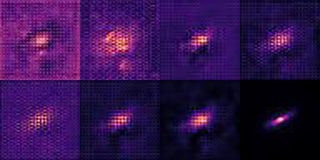Environment Place 7 days 2023 is below and Place.com is searching at the recent point out of artificial intelligence (AI) and its effects on astronomy and space exploration as the house age celebrates its 66th anniversary. Here, Paul Sutter discusses how AI is previously helping astronomers make new, remarkable discoveries.
Whether or not we like it or not, synthetic intelligence will change the way we interact with the universe.
As a science, astronomy has a prolonged custom of hunting for patterns by sifting by means of significant quantities of details, accidental discoveries, and a deep connection in between concept and observation. These are all locations where by synthetic intelligence programs can make the subject of astronomy quicker and more effective than at any time prior to.
That stated, it’s vital to notice that “synthetic intelligence” is a quite wide expression encompassing a huge wide variety of semi-related software package instruments and methods. Astronomers most normally flip to neural networks, exactly where the software learns about all the connections in a education info established, then applies the information of individuals connections in a serious facts set.
Relevant: How artificial intelligence is aiding us take a look at the photo voltaic program
Take, for occasion, facts processing. The pretty pictures splashed on line from the Hubble Room Telescope or James Webb House Telescope are far from the 1st go that those people instruments took of that certain patch of sky.
Raw astronomical visuals are comprehensive of glitches, messy foregrounds, contaminants, artifacts, and sound. Processing and cleaning these visuals to make some thing presentable – not to point out valuable for scientific analysis – necessitates an enormous sum of input, ordinarily completed partly manually and partially by automatic devices.
More and more astronomers are turning to artificial intelligence to method the knowledge, pruning out the useless bits of the photos to create a clear end result. For illustration, an graphic of the supermassive black hole at the heart of the galaxy Messier 87 (M87) initially released in 2019 was presented a equipment discovering “makeover” in April 2023, resulting in a considerably clearer graphic of the black hole’s construction.
In yet another illustration, some astronomers will feed pictures of galaxies into a neural community algorithm, instructing the algorithm with the classification plan for the identified galaxies. The current classifications came from handbook assignments, possibly by the scientists themselves or by volunteer citizen science initiatives. Schooling established in hand, the neutral community can then be utilized to actual info and mechanically classify the galaxies, a course of action that is considerably quicker and a lot less mistake prone than guide classification.
Astronomers can also use AI to eliminate the optical interference created by Earth’s ambiance from photos of house taken by ground-centered telescopes.
AI has even been proposed to enable us spot signatures of everyday living on Mars, understand why the sun’s corona is so very hot, or reveal the ages of stars.
Astronomers are also using neural networks to dig further into the universe than at any time before. Cosmologists are commencing to utilize artificial intelligence to fully grasp the basic character of the cosmos. Two of the biggest cosmic mysteries are the identities of darkish make a difference and darkish electrical power, two substances over and above our latest understanding of physics that mixed just take up above 95% of all the power contents all through the universe.
To assistance recognize individuals strange substances, cosmologists are currently hoping to evaluate their attributes: How significantly dim subject and dark power there is, and how they have altered more than the record of the universe. Little alterations in the qualities of dark make a difference and darkish strength have profound results on the ensuing record of the cosmos, touching almost everything from the arrangement of galaxies to the star development costs in galaxies like our Milky Way.
Neural networks are aiding cosmologists in disentangling all the myriad consequences of darkish subject and darkish electricity. In this circumstance, the teaching details comes from innovative laptop or computer simulations. In people simulations cosmologists vary the qualities of darkish make a difference and darkish vitality and see what variations. They then feed all those final results into the neural community so it can uncover all the fascinating means that the universe alterations. Although not fairly however all set for primetime, the hope is that cosmologists could then place the neural network at serious observations and permit it to convey to us what the universe is produced of.
Techniques like these are getting to be more and more essential as modern day astronomical observatory churn out large amounts of knowledge. The Vera C. Rubin Observatory, a point out-of-the-artwork facility beneath construction in Chile, will be tasked with delivering above 60 petabytes (with one petabyte equaling 1 thousand terabytes) of raw facts in the variety of large-resolution photos of the sky. Parsing that a great deal data is further than the capabilities of even the most decided of graduate pupils. Only personal computers, aided by synthetic intelligence, will be up to the process.
Of certain desire to that forthcoming observatory will be the lookup for the surprising. For case in point, the astronomer William Herschel learned the earth Uranus by accident in the course of a normal survey of the night time sky. Artificial intelligence can be utilised to flag and report potentially appealing objects by determining nearly anything that will not match an recognized sample. And in simple fact, astronomers have previously made use of AI to place a likely dangerous asteroid making use of an algorithm prepared especially for the Vera C. Rubin observatory.
Who appreciates what potential discoveries we will in the long run have to credit score to a equipment?

